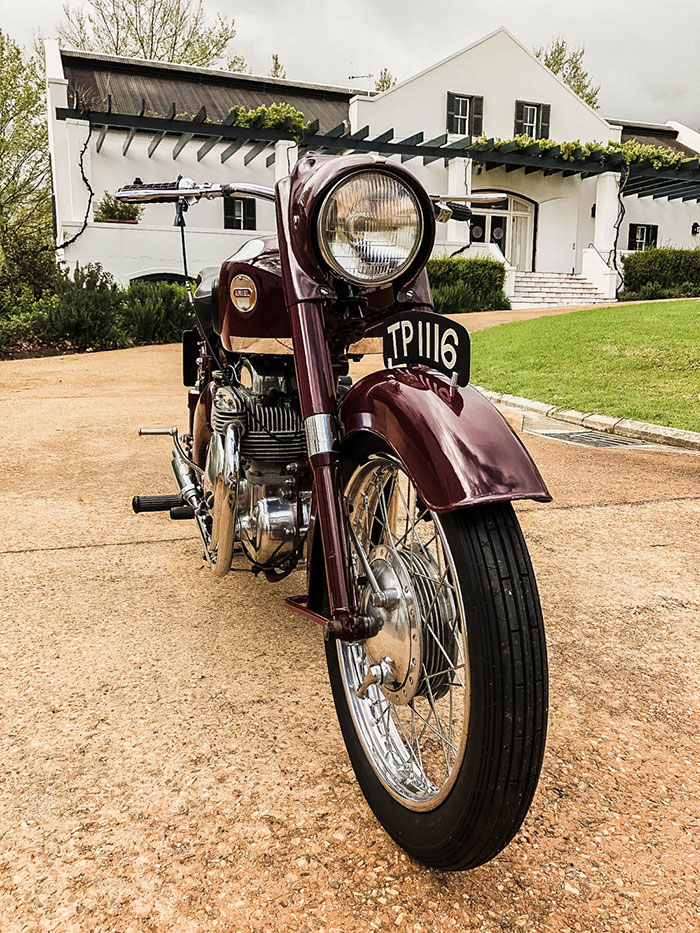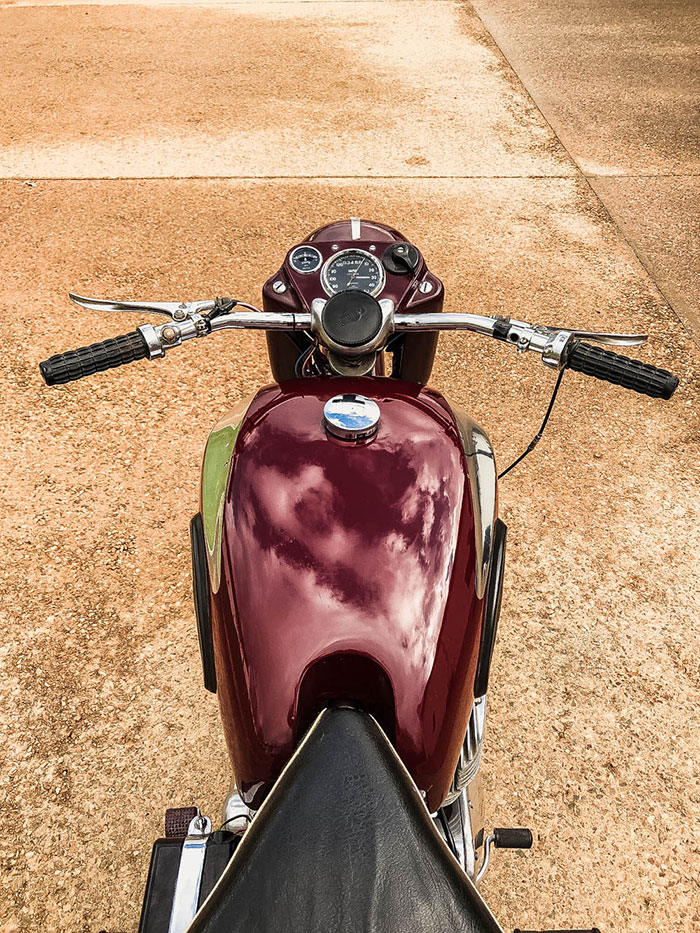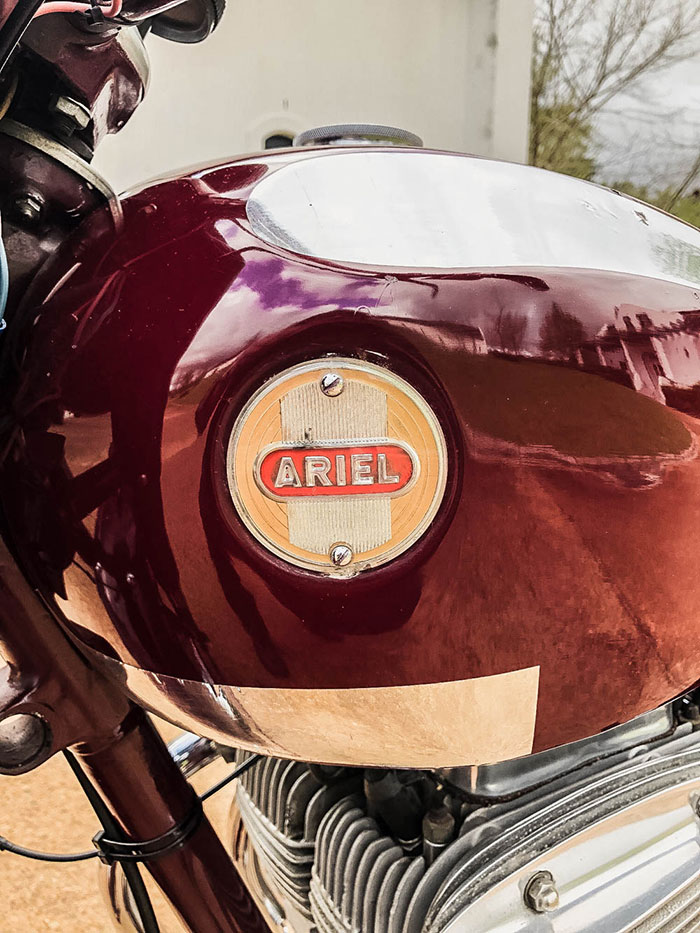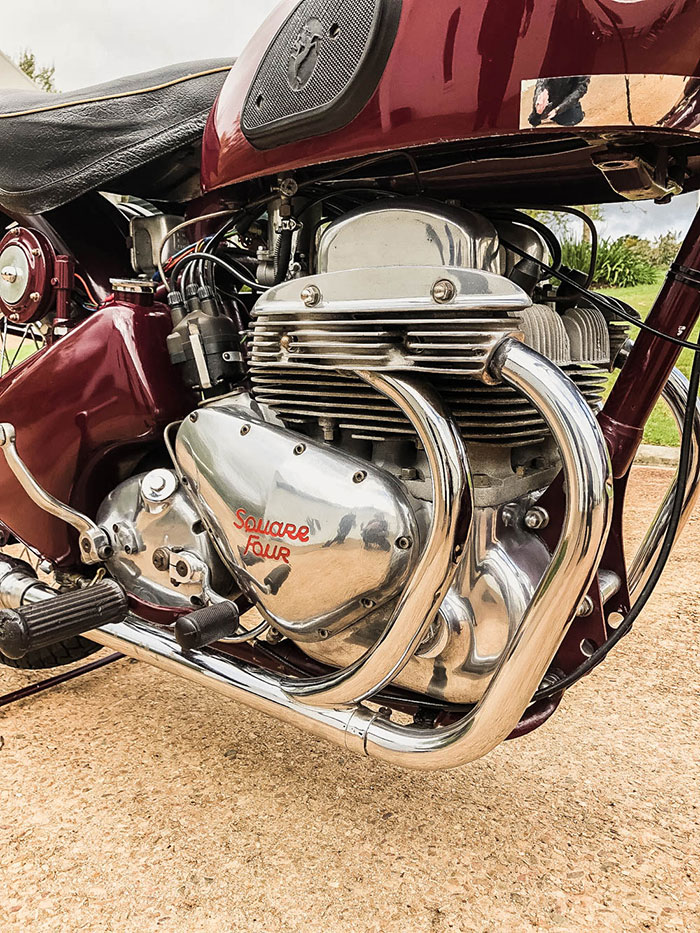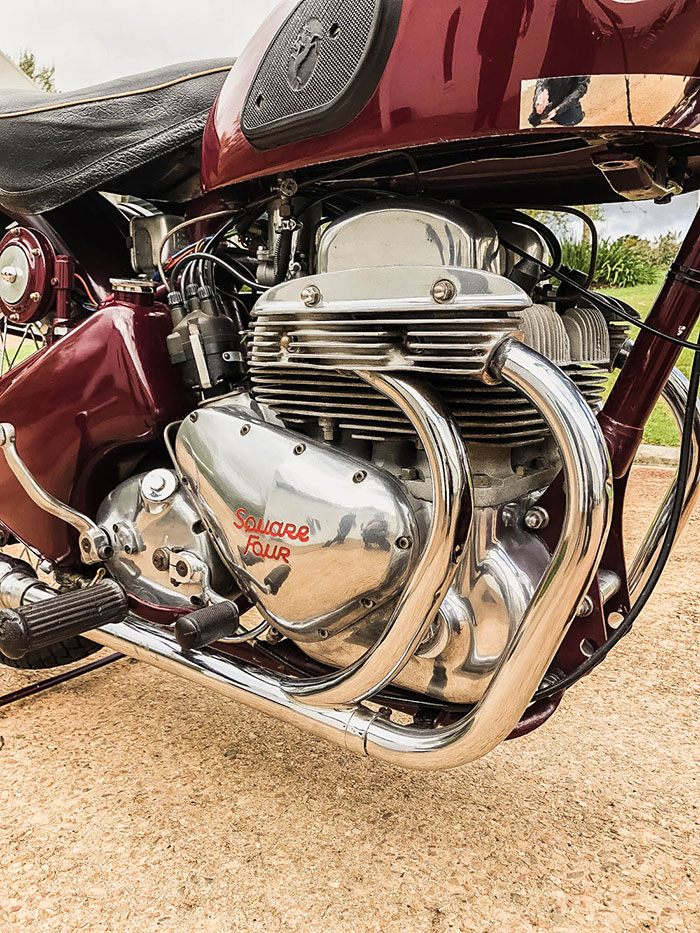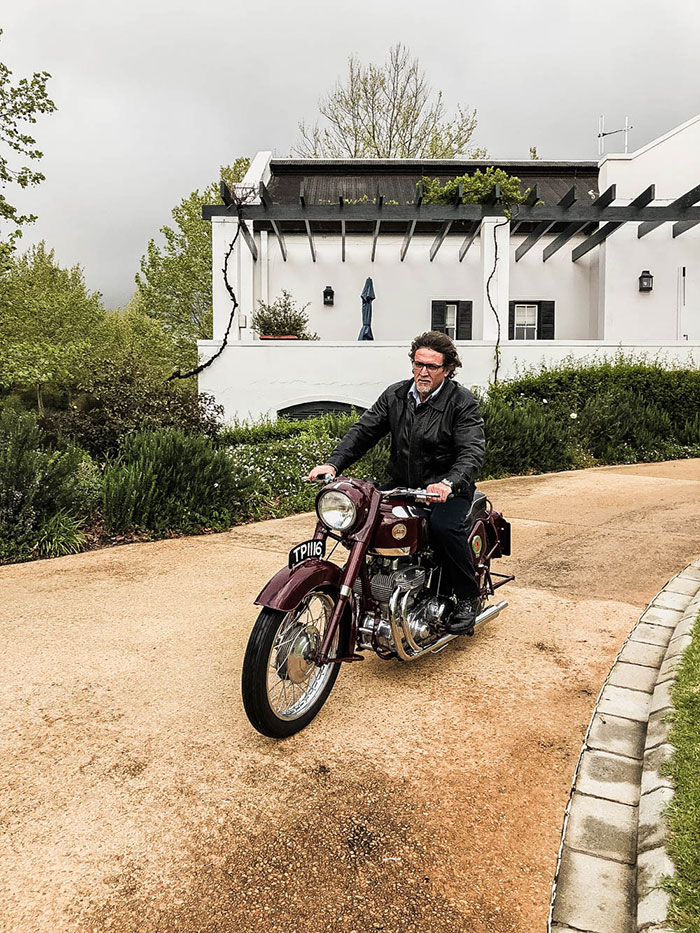
27 Sep On yer bike: Ariel
FMM curator Wayne Harley is a self-confessed motorcycle enthusiast and this month he ‘squares up’ with an Ariel…
The history of Ariel is almost as old as the mythical sprit that appears in William Shakespeare’s play The Tempest, and like some other motorcycle manufacturers, it has its roots in the bicycle industry. James Starley and William Hillman patented the first wheel to use a tensioned wire spoke in 1870, which had obvious weight advantages over other wheels of the time, and they used this design in their Ariel ‘penny farthing’ bicycle. Starley merged Ariel Cycles with the Westwood Manufacturing Company in 1896 and by 1898 they had built their first motorised quadra-cycle using a French De Dion engine and drivetrain. In 1902 the first Arial motorcycle made its appearance.
Ariel quickly earned a reputation as a sound and reliable motorcycle, and in 1905 the Auto Cycle Club (ACC) chose Ariel to represent Britain in the International Cup Race, which was won by their rider JS Campbell at an average speed of 40 mph (65 km/h). This bright start led to Ariel becoming one of the premier marques in the British motorcycle world and would remain so until the late-’60s.
Sadly, in 1970 Ariel was no more but by this time it had given the world a number of great motorcycles – the SV, Red Hunter and the unforgettable Square Four, or ‘Squariel’ as it was later nicknamed. The engine of the Square Four was the brainchild of Edward Turner, who later became a big shot at Triumph. Turner first had the idea in 1928; it was simple and yet so revolutionary, basically just two parallel-twin engines running one behind the other linked by a pair of gears that, because of the naturally opposing forces, allowed the engine to be balanced, providing minimum vibration and ultra-smooth operation.
But the real beauty was the size of the engine, which allowed Turner to fit a four-cylinder engine in a single-cylinder frame. Initially, the capacity was 500 cm3 and later 600 cm3. A 500 ridden by Ben Bicker managed to do 110 mph (176 km/h) at Brooklands, however Ariel could never claim an official record as the speed was not maintained for a full hour. This was because of the Achilles’ heel of these engines, overheating of the rear cylinders, a problem that would plague the Square Four in all its forms, including the Mk.2 1000 if it was ridden hard.
The Ariel Square Four remains a super special motorcycle if you consider it appeared at a time when most other motorcycles were still single-cylinder. The Vincent HRD had stopped production, so the Ariel Mk.2 was the only 1000 cm3 on the market… Man, this must have been like the Lamborghini of the bike world in its day.
So how does it ride? Let me start by saying things have come a long way in the motorcycle world since 1957, and this is no superbike. It may be a 1000 cm3 but it would be misleading to speak of performance, let alone that you still needed to kick-start it! However, once running, you cannot help noticing just how smooth and quiet the Ariel runs. Controls and instruments are simple and easy too except for the standard switching of the rear brake pedal and gear lever, common on British bikes of this era. Out the blocks the Ariel feels no different to a 600 Dommie or a Goldflash but it feels as though she could have a little more legs. There is a good 45 hp (33 kW) on tap and I’m sure that the claimed 100 mph is reachable.
Even with this motorcycle being a 1957 Mk.2 and having the full alloy engine, the bike is a heavy animal, weighing-in at 192 kg. Power is delivered to the rear wheel by means of a sprocket-and-chain drive system through a four-speed Burman gearbox. Selection is easy and smooth and matches the engine performance nicely. The bike handles well for a ’50s machine and was obviously at the sharp end in its day. It has telescopic front forks and a plunger-link spring system at the rear. All this, along with the broad saddle (that is very comfortable, by the way) and sitting in a standard riding position makes for a very pleasant ride. Regarding the mechanically-operated drum brakes, they seem to do their job rather well at low speeds, but I was not going to test them at the claimed Imperial ton…
It’s a pity the Ariel Square Four was discontinued in 1958 as it would have been interesting to see how things may have developed, although with all due respect, they were prone to overheating and a little unreliable. And the Japanese were knocking on the door with their faster, lighter and more reliable machines. Interestingly enough, Kawasaki with the KH750 and Suzuki with the RG500 and RS67 all used a square-four engine layout.
